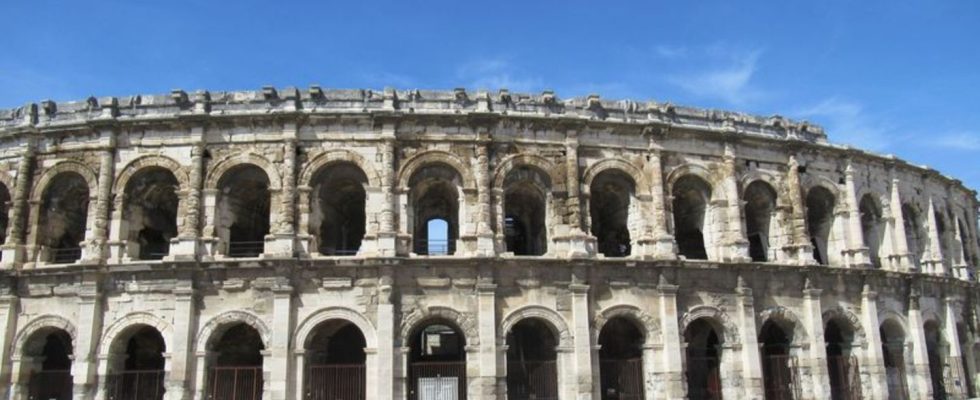Art
Triennale in Nîmes: Roman and contemporary at the same time
The southern French city of Nîmes is famous for its Roman amphitheater, but has much more to offer – especially now with the Triennale “Contemporaine”. photo
© Sabine Glaubitz/dpa
The southern French city is known for its amphitheater, the majestic Roman temple and the historic old town. With her first Triennale she now wants to be increasingly contemporary.
The huge sculpture “Water lines” by Feda Wardak and renowned artist Tadashi Kawamata stands in the romantic 18th century Fontaine Gardens. It resembles an aqueduct from which water mysteriously spurts. It is one of the installations in public space at the first art triennial in the southern French city Nimes.
With the Triennale “Contemporaine”, which runs until June 23rd, Nîmes wants to assert itself culturally against Avignon with its theater festival and Aix-en-Provence with its poetry festival. Or to put it in the words of the mayor of the city with around 150,000 inhabitants, Jean-Paul Fournier: The most Roman of all French cities wants to become the “epicenter of contemporary creativity”.
Nîmes has long attracted art lovers
Nîmes is already well positioned with art: The Musée de la Romanité, which opened in 2018 right next to the famous amphitheater, houses important archaeological collections, and the Museum of Fine Arts has the second largest collection in the Languedoc-Roussillon region with French, Flemish, Dutch and Italian paintings.
The Carré d’Art has been attracting art lovers from 1960 to the present for over 30 years. Part of the collection is dedicated to German painting with works by Gerhard Richter, Sigmar Polke and Albert Oehlen, supplemented by installations by Thomas Schütte.
Triennale designs tandem projects
The Triennale is characterized by a special concept: it creates tandem projects that unite promising artists of their generation with established and older colleagues. This includes the duo Kawamata/Feda Wardak as well as the Turner Prize winners Laure Prouvost and Caroline Mesquita.
Also noteworthy is Jeanne Vicerial’s exhibition “Avant le jour” (Before the Day) at the Museum Vieux Nîmes. She examined the work of the painter Pierre Soulages, who died in 2022, and who researched the color black throughout his life. The result: monochrome textile sculptures that she created from a single thread several kilometers long.

